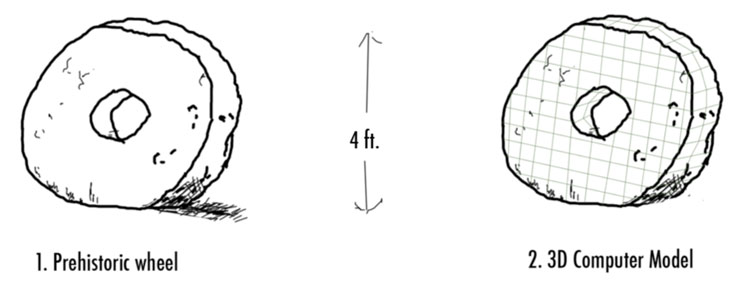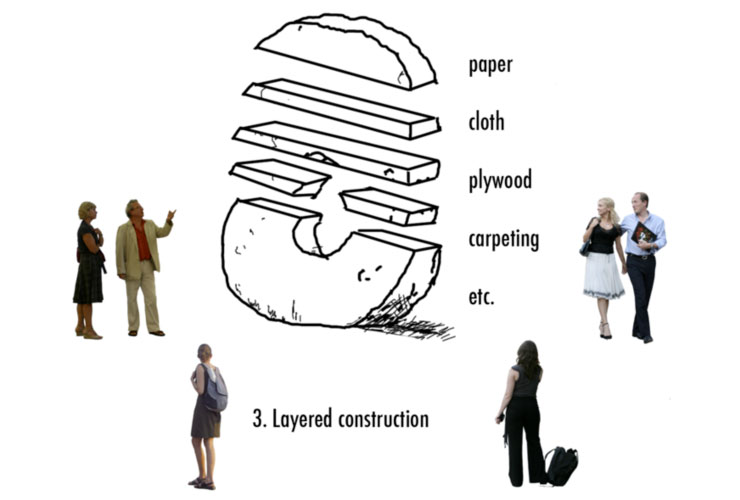PROJECTS
Slow Prototyping
Rapid Prototyping
Rapid prototyping is revolutionizing the practice of industrial design, changing the way we relate to designed objects just as desktop publishing redefined our relationship with print. It is the essence of magic—the creation of perfect objects from thin air. A 3D printer is one common rapid prototyping technology that works by laying down microscopic layers of material such as wax or plastic powder in precise cross-sections that combine to the form the final object. By allowing ideas to translate, seemingly effortlessly, into physical form, rapid prototyping obliterates the labor required for the making of things, and hurries our existing material environment into early obsolescence.

Slow Prototyping
Slow Prototyping produces a single object, slowly and laboriously constructed through the accumulation of materials from the community and through the handiwork of the artists and audience/participants. Slow Prototyping follows the same process as rapid prototyping, but the prototype's layers are made by hand from any flat, recycled/reused materials such as cloth, wood, cardboard, or other forms of trash or waste. Although the techniques of layer-by-layer, cross-sectional construction are the same as a rapid prototyping 3D printer, in Slow Prototyping, the process is magnified and prolonged to provide participants with direct experience of the labor involved in creation. By relying on recycled/reused materials, Slow Prototyping tries to encourage long-term sustainability by reinvesting in the "old and slow" – in materials and technologies that already exist. Slow Prototyping refocuses attention on the world that already surrounds us.

Reinventing the Wheel
The result of Slow Prototyping is a large, public sculpture generated entirely out of materials garnered from the local community. Whereas rapid prototyping is usually employed to represent "new" technologies, we apply slow prototyping toward the creation of an "old" technology: The Wheel. The end result is a larger-than-life public sculpture of a prehistoric stone wheel.
The Process
Slow Prototying uses 3D modeling software and RSI's own open source software (dubbed "SlowWorx") to produce the horizontal cross-section designs. These cross-sections serve as pattern pieces from which we hand cut each layer of the sculpture. Materials for the sculpture are recycled from donated refuse and collected community waste. Audience/participants and volunteers are invited to bring materials that they would like to see included in the final sculpture. Everyone is invited to participate in every stage of the Slow Prototyping process. Audience/participants learn a variety of cutting and joining sculpture techniques including cutting, sawing, gluing, sewing, drilling, hammering, structural reinforcement, etc.
